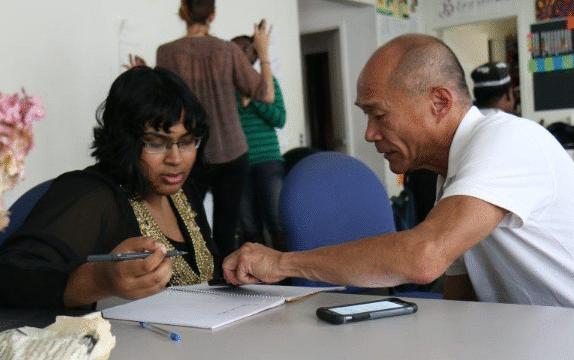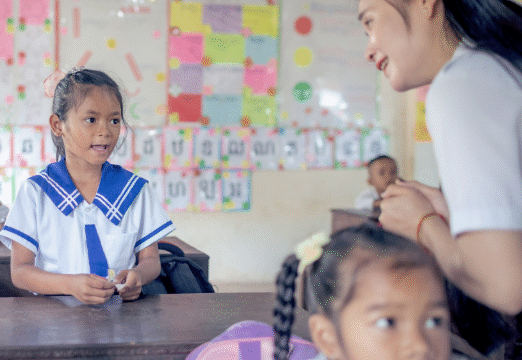Education is more than simply providing textbooks,
classrooms, and exams. Around the world, the growing
idea of holistic education is shaping how communities,
educators, and families view learning. Instead of focusing only on academic performance, holistic approaches recognize that students are whole people with emotional, social, cultural, and physical needs. This perspective is especially important in discussions about universal education because it helps ensure that all learners, regardless of background, can thrive in environments that encourage growth on multiple levels.
When we talk about universal education, the first thought is often access: making sure every child has the chance to go to school. While access is a crucial foundation, access alone is not enough. A holistic approach asks a deeper question: what kind of education are learners receiving once they are inside the classroom? True universality in education is not only about numbers but about creating systems that are inclusive, nurturing, and meaningful for everyone.
A central part of holistic education is recognizing that learning is not confined to the mind. The emotional well-being of students has a direct impact on their ability to learn. For example, a child who comes to school hungry or stressed will find it harder to concentrate on lessons. Many schools around the world are beginning to integrate meal programs, mental health support, and safe spaces for expression, all of which contribute to a more balanced learning experience. These measures ensure that children feel valued and supported, which in turn strengthens their academic engagement.
Another important aspect is cultural relevance. In some communities, education has historically been delivered in ways that do not reflect local traditions, languages, or values. Holistic approaches respect the idea that children learn best when their culture is seen as an asset rather than a barrier. Programs that include mother tongue instruction in early years, or that weave cultural stories and practices into the curriculum, can boost confidence and make education feel more personal. This approach helps bridge gaps and fosters a sense of belonging in schools, which is key to keeping students motivated.
Social development also plays a vital role in holistic education. Classrooms are not just spaces for learning math or science; they are environments where children learn to collaborate, resolve conflicts, and practice empathy. Group projects, community service, and peer mentoring are examples of methods that help students build skills beyond academics. These social and emotional skills are increasingly recognized as essential for success in life, not just in school. A student who learns how to work well with others and adapt to challenges carries those strengths into adulthood, benefitting communities as a whole.
Physical well-being is another dimension that cannot be overlooked. Education systems that integrate sports, movement, and health education support the idea that learning happens in an active body. Children need opportunities to run, play, and stay healthy, and these experiences are not distractions from academic learning but vital contributors to it. In fact, studies consistently show that students who are physically active often perform better academically. Including physical health as part of the education process reinforces the idea that the mind and body work together in learning.
One of the strengths of holistic approaches is their ability to adapt to different contexts. In rural areas where schools may be far apart, community-based learning centers that combine academics with life skills training can make education more practical and relevant. In urban environments where students may face stress from overcrowded schools or limited resources, creative arts and mindfulness practices can be powerful tools for balance. No single method works everywhere, but the principle of addressing the whole child provides a flexible framework that communities can shape to meet their needs.
Technology also offers new possibilities for holistic education when used thoughtfully. Digital tools can connect students with lessons, tutors, and peers across the globe, expanding opportunities beyond their immediate environment. However, a holistic perspective reminds us that technology is not a solution on its own. It needs to be paired with guidance, critical thinking, and human interaction. Blending digital resources with supportive teaching can enrich learning without losing the personal connections that are so important for growth.
Teachers play a central role in this vision. When teachers are trained to see themselves not only as knowledge deliverers but as mentors and guides, the classroom becomes more dynamic. Teachers who understand the value of emotional intelligence, cultural inclusivity, and creativity can design lessons that inspire curiosity and resilience. Professional development opportunities that encourage teachers to explore holistic methods help sustain this shift in education systems.
Communities also have an important part to play. Parents, families, and local leaders can support schools by reinforcing values of collaboration, respect, and well-being at home and in the wider community. When schools and communities work together, students benefit from consistent messages and shared responsibility. This sense of partnership strengthens universal education because it ensures that learning is not confined to the classroom but is a collective effort.
The benefits of holistic approaches are long-lasting. Students who are taught in nurturing, inclusive environments often grow into adults who are adaptable, empathetic, and community-minded. In societies that prioritize this form of education, the ripple effects can be seen in healthier communities, stronger social bonds, and more resilient economies. When every child has the opportunity not only to attend school but to be truly supported in every aspect of learning, education becomes a transformative force for generations.
The path toward universal education is filled with challenges, from limited resources to policy hurdles. Yet by embracing holistic approaches, these challenges can be met with creativity and compassion. Whether through meal programs, inclusive curricula, active learning, or emotional support, the focus remains on the same principle: education should nurture the whole person.
In the end, the vision of universal education is not just about ensuring that all children have a seat in a classroom. It is about creating environments where each learner can discover their potential, feel respected, and grow in ways that prepare them for life beyond school. Holistic approaches bring this vision closer to reality by reminding us that education is about people, not just systems. If universal education is to be meaningful, it must recognize and celebrate the fullness of every learner’s journey.






